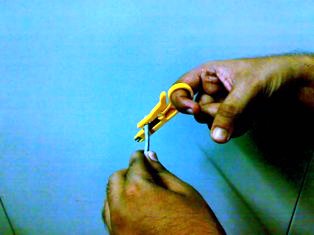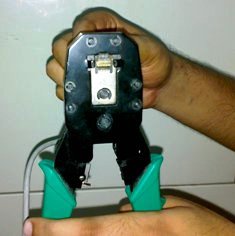Intel®
High Definition Audio
Integrated Audio for Today
and Tomorrow
Audio on the desktop PC has come a long way
from the warning beeps of the original PC. Most
systems today offer 44-kHz/16-bit stereo CD
quality, and many even add multiple channels to
provide a Dolby* Digital or DTS*-type surroundsound experience.
Integrated audio solutions such as AC’97 are costeffective and offer a good end-user experience in both stereo and multi-channel formats.
However, the current integrated audio capabilities fall short in meeting the requirements of the
next generation of PCs designed for digital entertainment.
Intel has worked with the industry to develop a new specification for integrated audio that is capable
of delivering the features and high-end performance of an add-in audio card. Intel®
High Definition
Audio (Intel®
HD Audio) is capable of playing back more channels at higher quality than previous
integrated audio formats. In addition, Intel®
HD Audio has the technology needed to support the latest and greatest audio content. By enabling enhanced usage models, Intel HD Audio, when combined with the Intel®
915G, 915P and 925X Express chipsets will also change how computer users
interact with sound.
The Challenge to Find Better Audio
When AC’97 was initially developed users were typically listening to only music and movies with
stereo sound. With the success of DVD movies encoded with Dolby Digital and DTS multi-channel
audio formats, users have become accustomed to listening in full surround sound with anywhere
from six to eight speakers.
While AC’97 technology has struggled to keep pace with all these advancements, Intel HD
Audio is designed specifically for the high-quality multi-channel audio experiences of today and
tomorrow. Newer audio and video encoding/decoding algorithms also enable a higher-quality
listening experience.
Sales BriefWith the explosion of digital content, more and more consumers
are moving their computers into the living room or family room
so they can enjoy digital music or movies throughout the house
on state-of-the-art multi-channel stereo systems or big screen
TVs. With better speakers connected to their computers, the
limitations of current computer sound subsystems, whether
integrated or add-in, can ruin the digital experience.
Many consumers are also starting to ask for the ability to play two
different audio streams through their PC at the same time—perhaps classical music in the study and a movie in the living room.
These demands cannot be met with current audio solutions.
An Outstanding Audio Experience
Intel HD Audio delivers significant improvements over previous
generation integrated audio and sound cards. Designed to
support the convergence of digital entertainment, the Intel HD
Audio specification delivers the features needed for an
improved audio experience.
Intel HD Audio is capable of delivering the support and sound
quality for up to eight channels at 192 kHz/32-bit quality, while
the AC’97 specification can only support six channels at
48 kHz/20-bit. In addition, Intel HD Audio is architected to
prevent the occasional glitches or pops that other audio
solutions can have by providing dedicated system bandwidth
for critical audio functions.
Innovative Uses for the Digital Home
Dolby Laboratories* selected Intel HD Audio to bring Dolbyquality surround sound technologies to the PC, as part of
their recently announced PC Logo Program. The combination of these technologies marks an important milestone in
delivering quality digital audio to consumers. Intel HD Audio
will be able to support all the Dolby technologies, including
the latest Dolby Pro Logic* IIx, which makes it possible to
enjoy older stereo content in 7.1 channel surround sound.
Another consumer need is for the ability to play back two
different audio tracks, such as a CD and a DVD simultaneously, which can’t be done using current audio solutions. Intel
HD Audio features multi-streaming capabilities that give users
the ability to send two or more different audio streams to
different places at the same time, from the same PC. Here
are examples of how this can be used:
Surround
CD
Dolby Digital
DTS
DVD Video
Left
Center
Subwoofer
Right
Surround
Game Audio
Dolby
Digital
Chat Audio
Figure 1: You can play a game online and chat with the other players
by sending the game sound to 5.1 speakers while the Internet
chatting audio is sent through your headset.
Figure 2: A DVD movie with 5.1 audio can be sent to a surround sound system in the living room, while you listen to digital music and surf the
Web on the PC.Intel HD Audio handles these and other applications with ease,
which is attractive to users as multiple, simultaneous applications become more commonplace in the digital home.
Microsoft* has chosen Intel HD Audio as the main architecture for
their new Unified Audio Architecture* (UAA), which provides one
driver that will support all Intel HD Audio controllers and codecs.
While the Microsoft driver is expected to support basic Intel HD
Audio functions, codec vendors are expected to differentiate
their solutions by offering enhanced Intel HD audio solutions.
The result is high-quality PC based audio that delivers a
seamless convergence of digital entertainment between the
PC and consumer electronic devices.
Enhanced Features
Intel HD Audio also enables enhanced voice capture through
the use of array microphones, giving users more accurate
speech input. While other audio implementations have limited
support for simple array microphones, Intel HD Audio supports larger array microphones. By increasing the size of the
array microphone, users get incredibly clean input through
better noise cancellation and beam forming. This produces
higher-quality input to voice recognition, Voice over IP (VoIP),
and other voice-driven activities.
Intel HD Audio also provides improvements that support better
jack retasking. The computer can sense when a device is
plugged into an audio jack, determine what kind of device it is,
and change the port function if the device has been plugged
into the wrong port. For example, if a microphone is plugged
into a speaker jack, the computer will recognize the error and
can change the jack to function as a microphone jack. This is
an important step in getting audio to a point where it ‘just
works’—users won’t need to worry about getting the right
device plugged into the right audio jack.
The Solution for the Future
Intel HD Audio helps audio reach new levels with digital
quality audio and compelling new usage models for digital
home/office applications. Designed for “glitch-free” audio
playback, multi-streaming, jack retasking, and UAA support,
Intel HD Audio offers an audio solution for years to come.
As one of the many new technologies introduced with the
Intel®
925X and 915 Express chipset family, Intel HD Audio
enhances the end-user experience and enables the convergence of digital entertainment for both PCs and Consumer
Electronics (CE) products.INFORMATION IN THIS DOCUMENT IS PROVIDED IN CONNECTION WITH INTEL®
PRODUCTS. NO LICENSE, EXPRESS OR IMPLIED, BY ESTOPPEL
OR OTHERWISE, TO ANY INTELLECTUAL PROPERTY RIGHTS IS GRANTED BY THIS DOCUMENT. EXCEPT AS PROVIDED IN INTEL’S TERMS AND
CONDITIONS OF SALE FOR SUCH PRODUCTS, INTEL ASSUMES NO LIABILITY WHATSOEVER, AND INTEL DISCLAIMS ANY EXPRESS OR IMPLIED
WARRANTY, RELATING TO SALE AND/OR USE OF INTEL PRODUCTS INCLUDING LIABILITY OR WARRANTIES RELATING TO FITNESS FOR A
PARTICULAR PURPOSE, MERCHANTABILITY, OR INFRINGEMENT OF ANY PATENT, COPYRIGHT OR OTHER INTELLECTUAL PROPERTY RIGHT. Intel
products are not intended for use in medical, life-saving, life-sustaining applications. Intel may make changes to specifications and product descriptions at
any time, without notice.

















